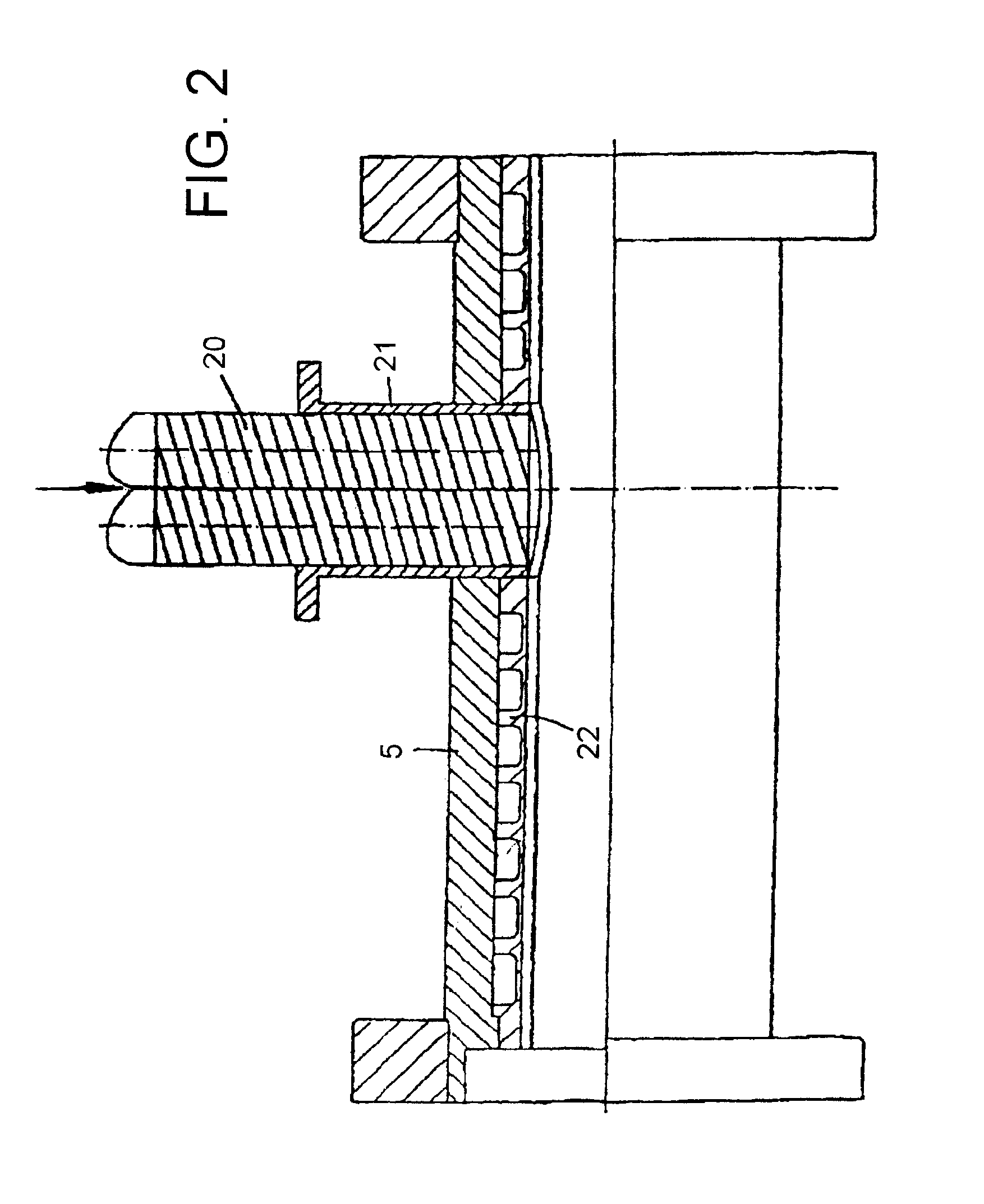Blend of plastics with wood particles
a technology of plastics and wood particles, applied in the field of plastics with wood particles, can solve the problems of only very badly transported heat by wood, difficult materials can be blended in the extruder, and considerable heating, and achieve the effects of reducing the cost of construction, high conveying effect, and high conveying
- Summary
- Abstract
- Description
- Claims
- Application Information
AI Technical Summary
Benefits of technology
Problems solved by technology
Method used
Image
Examples
Embodiment Construction
[0286]FIG. 1 shows an extruder for the production of blends of plastic and wood particles. The extruder has four sections. The extruder sections are designed as planetary roller extruder sections, the fourth extruder section is designed as single-screw extruder and serves for the material feed.
[0287]Thereby the housings of the planetary roller extruder sections are marked with 5 and the housing of the single-screw extruder section is marked with 1. Each housing 5 has welded flanges 6 and 7, which are screwed to each other in not demonstrated form. The housing 1 is equipped with flanges 3 and 4 which serve as fastening like the flanges 6 and 7.
[0288]Each housing 1 and 5 is internally lined with liners.
[0289]Furthermore, at the inner side of the housing are shown channels which can be charged with heating agents or cooling agents if necessary.
[0290]The shown ends of the housings 5 are equipped with a clearance for a centring ring 11 and stop ring and wear ring 8.
[0291]The stop ring an...
PUM
| Property | Measurement | Unit |
|---|---|---|
| size | aaaaa | aaaaa |
| particle size | aaaaa | aaaaa |
| particle size | aaaaa | aaaaa |
Abstract
Description
Claims
Application Information
 Login to View More
Login to View More - R&D
- Intellectual Property
- Life Sciences
- Materials
- Tech Scout
- Unparalleled Data Quality
- Higher Quality Content
- 60% Fewer Hallucinations
Browse by: Latest US Patents, China's latest patents, Technical Efficacy Thesaurus, Application Domain, Technology Topic, Popular Technical Reports.
© 2025 PatSnap. All rights reserved.Legal|Privacy policy|Modern Slavery Act Transparency Statement|Sitemap|About US| Contact US: help@patsnap.com



